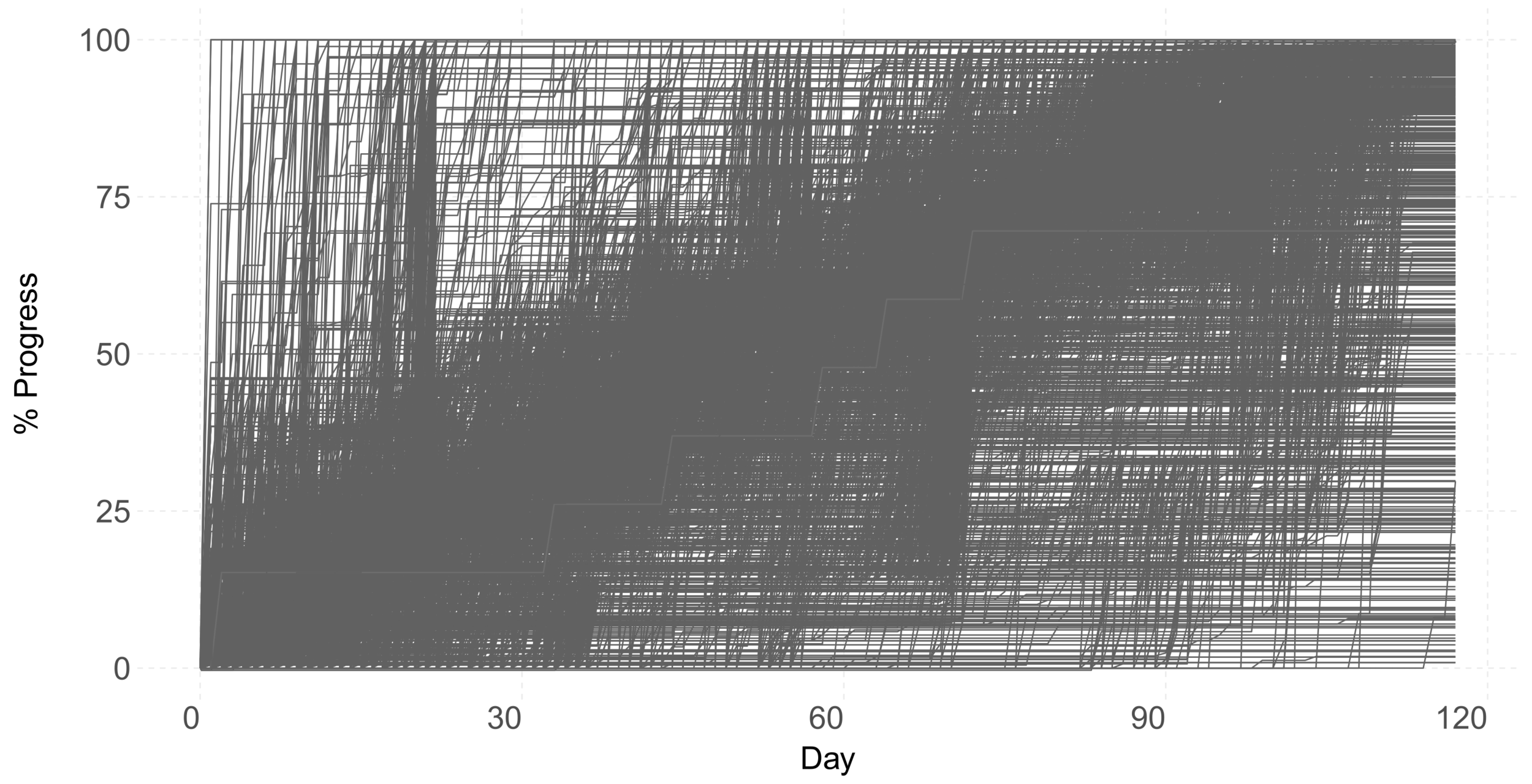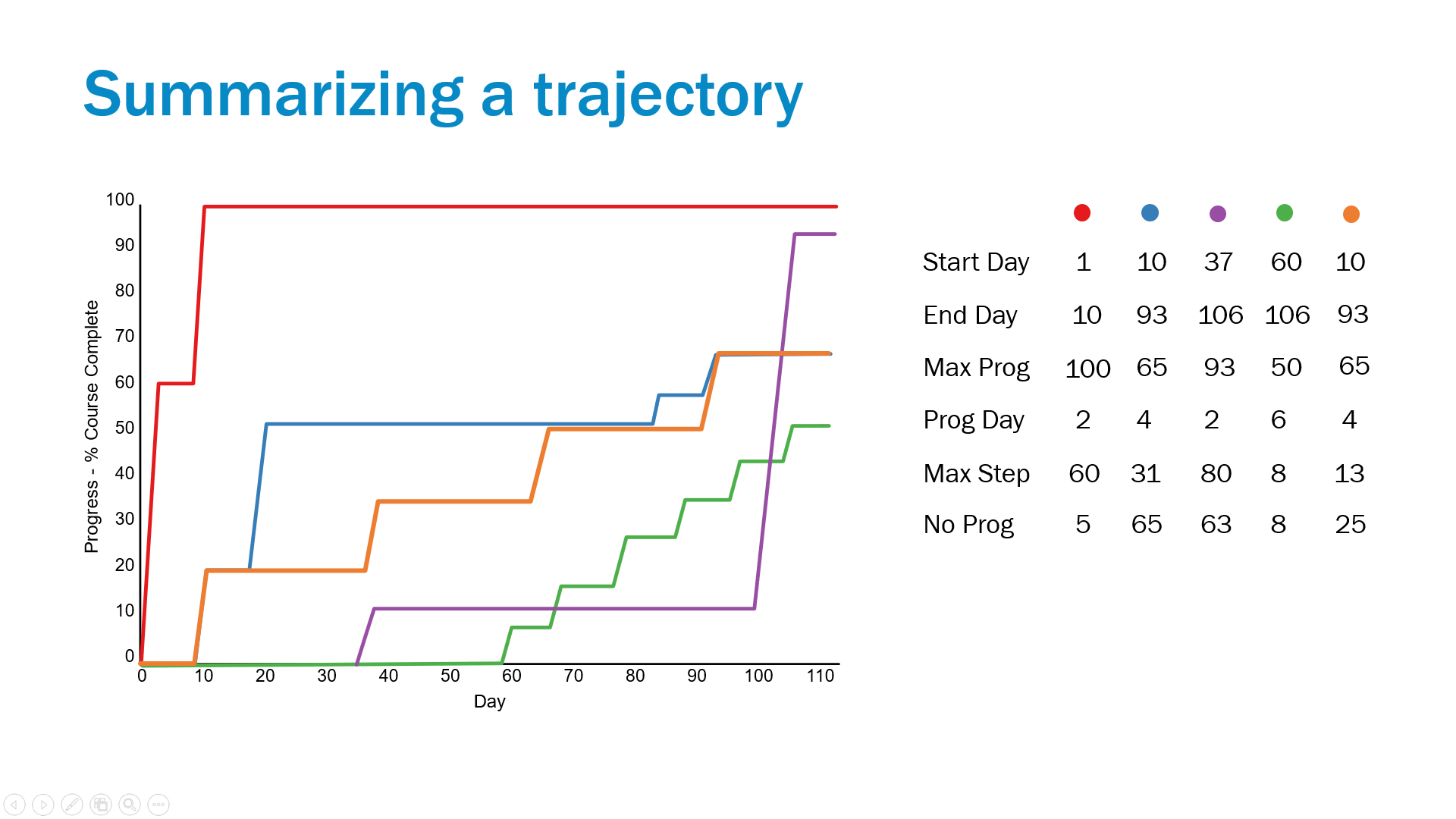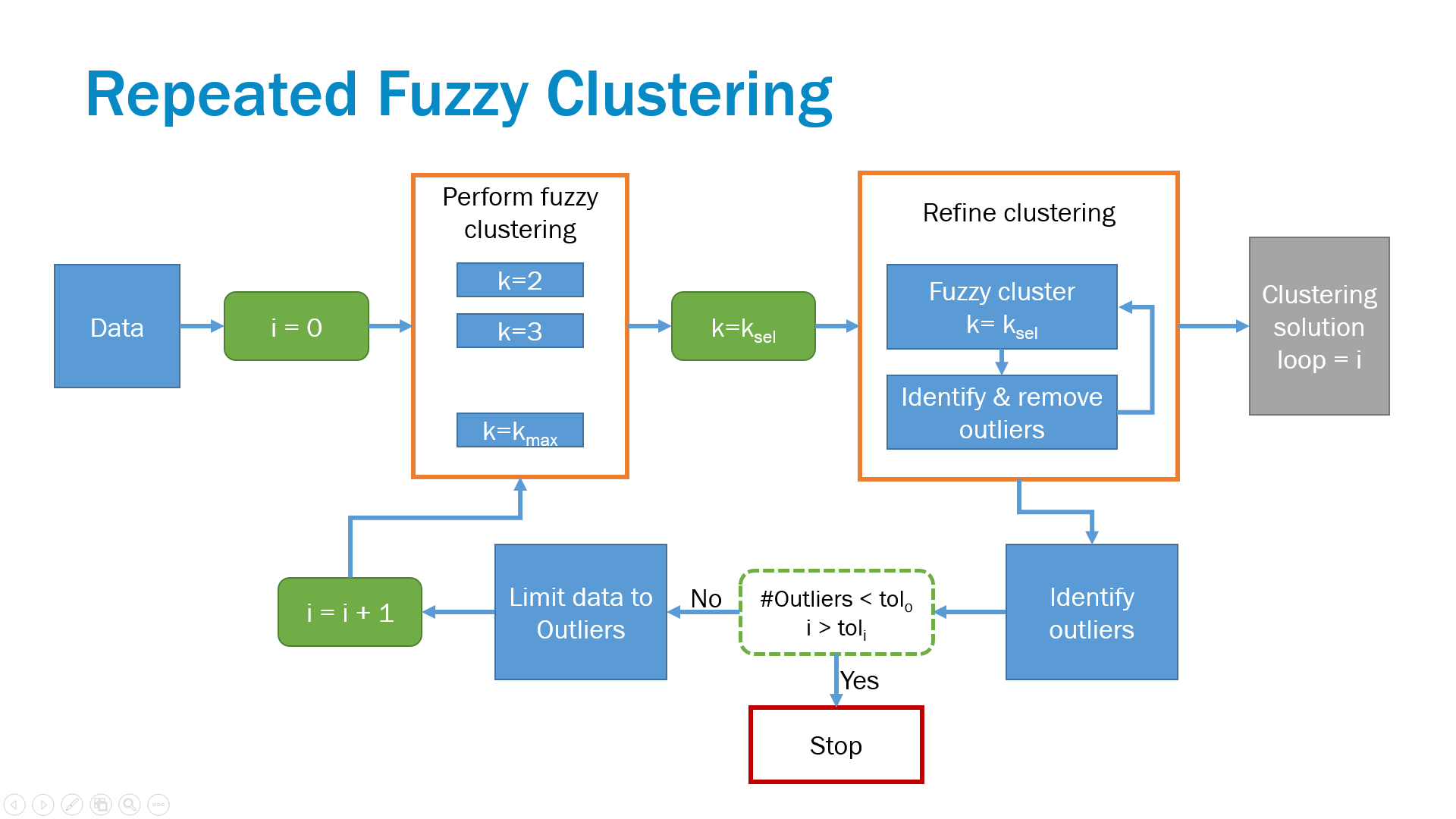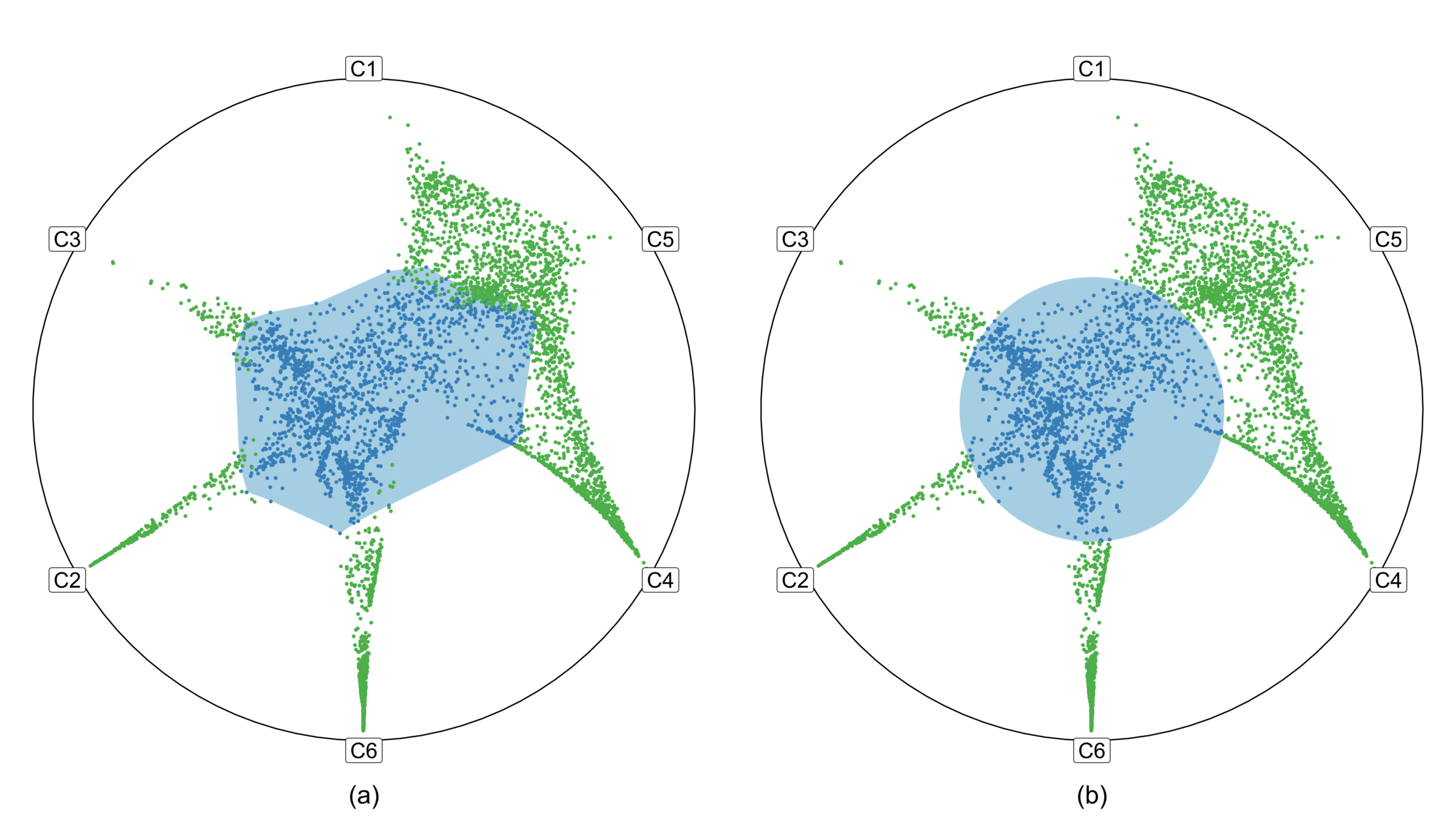Detecting Behaviors in
Student Progress Trajectories
Colm Howlin
Realizeit
@cp_h
colm.howlin@realizeitlearning.com
Charles Dziuban
University of Central Florida
@papuga
charles.dziuban@ucf.edu
Presented at Educational Data Mining 2019. July 2 - 5, 2019, Montréal, Canada


-
Moved from a broadcast model to on-demand availability.
-
Instructors want to know what their students are doing and what they should be doing.
-
Are there student putting in lots of effort but getting nowhere? Are there students who aren’t really trying?
-
Impact on student learning – attainment, retention of knowledge, grades.
Motivation
Use these controls to play and interact with the animation
Progress Trajectories
N=5044
51 online and blended courses
Nine terms - 2015 to 2018
Psychology, Spanish, College Algebra, various Computing courses, and Nursing.

Summarizing a Trajectory

Repeated Fuzzy Clustering
-
Initial attempts using a single application of crisp or fuzzy clustering did not produce coherent groupings - Outlier behaviors were being missed
-
He et al. [2016, 2017] used clustering to search for hidden communities in social networks.
-
First used clustering to discover the most apparent communities.
-
Then decreased the weights on the edges in the social network that represented hidden communities
-
Repeating the clustering uncovers previously hidden communities.
-
-
Capture how well a cluster represented a student trajectory
-
Fuzzy clustering naturally lends itself to this
-
Repeated Fuzzy Clustering

Finding Outliers
-
Students should be well described by at most two clusters – interpretable by instructors
-
Radviz visualizes a clustering solution - points close to the center are evenly distributed among all clusters

Clustered Behaviors

3244 (64.3%)
915
(18.1%)
293
(5.8%)
340
(6.7%)
352 (5.0%)
Next Steps
-
So what?
-
Stage 1: Instructor feedback → Stage x: Automated Interventions
-
Needs to be actionable
-
What is driving behaviours?
-
How consistent are behaviours?
-
What are the long term impacts?
-
-
-
Algorithm
-
Include effort / engagement in the clustering
-
How robust is the algorithm to the choice of the number of clusters on each repetition?
-
The impact of the method to choose outliers
-
Colm Howlin
Realizeit
@cp_h
colm.howlin@realizeitlearning.com
Charles Dziuban
University of Central Florida
@papuga
charles.dziuban@ucf.edu
Detecting Behaviors in Student Progress Trajectories - Presented at Educational Data Mining 2019. July 2 - 5, 2019, Montréal, Canada

